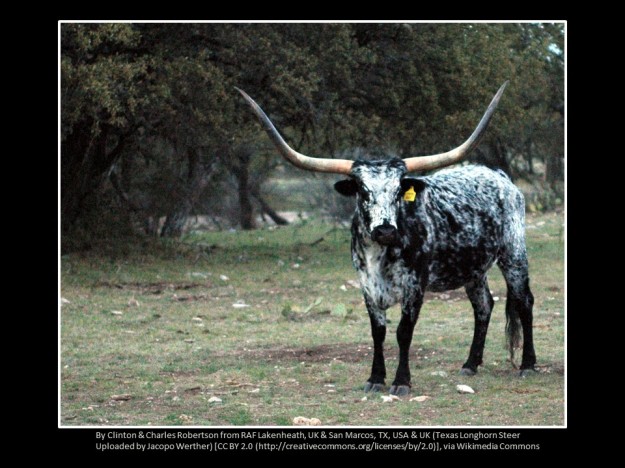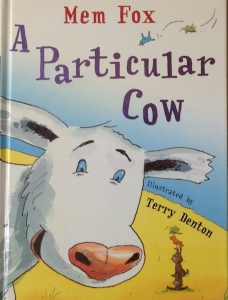I love the opportunity of finding out something I didn’t know before, and because there is so much that I don’t know, the opportunities seem to arise quite frequently. Perhaps if I’d taken more advantage of them in earlier years, there’d be less for me to know now, and I’d be more help on a trivia team.
Curiosity is an essential ingredient to learning and it is important for parents and teachers to encourage it in children, as well as themselves. Providing children with the opportunity of asking questions and helping them find out about what they want to know helps keep curiosity alive. Michael Rosen’s book Good Ideas: How to be Your Child’s (and Your Own) Best Teacher has many wonderful suggestions for doing just that. I wrote about that before here and here.

Over the past few weeks, I have felt increasingly challenged by the flash fiction prompts dished out by Charli Mills at the Carrot Ranch. This week she had me (almost) completely stumped with her challenge to In 99 words (no more, no less) write a (story) that includes the word longhorn. Charli’s in Kansas at the moment, and her reference is to longhorn cattle, a breed not familiar to most Australians. I was aware of a longhorn beetle, but knew little about them too.

Observing photographs of longhorn cattle, these were my thoughts:
- Aren’t those horns heavy? How do they hold their heads up?
- Wouldn’t the horns be dangerous – to the horn owner, as well as to others?
- What would happen if the animals tried to move through scrub? They could get caught between trees, or knock their horns off.
- What is the purpose of the long horns?
- Imagine giving birth to something with horns like that!
- Are they bred for beef or diary?
How could I write anything without doing a little research?
Fortunately, research is no longer as difficult as it was when I was a child. Press a few buttons on the computer, and a world of information awaits. My first stop was Wikipedia, but I investigated other sites too, including The Longhorn Cattle Society and Texas Longhorns. Here’s some of what I discovered in answer to my questions:
- Longhorns are the descendants of the first cattle to arrive in the Americas with Christopher Columbus and Spanish colonists. Many escaped or were set free on the plains and were mostly feral for about two hundred years.
- Horns form part of the skull and are difficult to weigh on a live animal. As the horns may continue to grow for several years, there are some differences, and steer horns are usually longer (and presumably heavier) that those of bulls and cows.
- Horns start to grow at about three weeks. Phew – after birth! In fact, The Longhorn Cattle Society states that the cows are great breeders and have few calving problems.
- Although the cattle may appear dangerous with their large horns, they are actually quite docile. However, they may experience damage to their horns if they are kept in confined spaces.
- According to Texas Longhorns, the horns are considered non-functional. I can’t imagine walking around with something that appears so heavy and unwieldy on my head, just for adornment!
- The cattle have many advantages, just some of which include ease of breeding, longevity and disease resistance. They produce lean meat and cheese has been produced from their milk.
- There are some Longhorns in Australia, even an association for Texas Longhorns.
In my explorations, I was surprised to find this article which tells of an Australian Longhorn JR that earned a position in the 2013 Guinness Book of Records for the longest horns.
JR was pipped at the post in 2014 by Lazy J’s Bluegrass with horns measuring 297.8 cm (117.25 in)
Watch Bluegrass here.
The owner says his horns probably weigh about 200 to 300 lbs (90 to 136 kg)!
I hope you enjoyed finding out about longhorn cattle as much as I did. Or maybe you already knew. When I read that many of the cattle had escaped or been released onto the plains by early settlers, I was reminded of the cow experience on the farm when I was a child.
Holy Cow! It’s a long shot
The enclosure was built, the hay delivered, the trough filled. We children watched from the rails, as Dad and Mum manoeuvred Cow #1 into the yard.
Everyone clambered to be first to milk her.
“We can all milk her – in the morning,” assured Dad.
But in the morning, the cow was gone. The gate lay crumpled on the ground.
A stronger gate contained Cow #2, but she squeezed under the fence.
More repairs must secure Cow #3? She jumped over to flee.
Defeated, Mum replenished her powdered supply, and we kids never learned to milk.
Should’ve got a longhorn?

For a fun picture book (also based on a true story) about a cow, without any horns, check out A Particular Cow written by Mem Fox and illustrated by Terry Denton. It’s hilarious!

Thank you for reading. I appreciate your feedback. Please share your thoughts.


Pingback: The Grass is Greener #99WordStories | Norah Colvin
Loved your flash and the video fits in perfectly! Doo, Dip! Doo-oo wee! 🙂
LikeLiked by 1 person
Thanks, Robin. I’m pleased you enjoyed it. 🙂
LikeLike
Pingback: Mending fences | Norah Colvin
Very funny FF, though I imagine it wouldn’t be a funny experience for a family depending on the cow! I imagine the long horns could help with catching an escaped cow too! Thanks for all the interesting facts. New knowledge for me too!
LikeLiked by 1 person
I don’t think my parents were amused, but it’s a funny story. I’m pleased you learned something new. 🙂
LikeLike
Well, you tackled this very difficult challenge very well, Norah. I had no idea what to write. Nothing came to me and, I hate to say it, I gave up. Maybe I should have done what you did and do some research on ‘longhorn’. Next time, I’ll certainly be taking the path you took and not give up.
LikeLiked by 1 person
Thank you, Hugh. I appreciate your comment. Good luck to both of us with the next one! 🙂
LikeLiked by 1 person
Pingback: Gather the Longhorns « Carrot Ranch Communications
Well done Norah. I know I would have been stumped for that challenge, even with Google, lol. 🙂
LikeLiked by 1 person
I was. But Google was a big help! 🙂
LikeLiked by 1 person
A writer’s best friend 🙂
LikeLiked by 1 person
🙂
LikeLiked by 1 person
I don’t know enough about cows to even know there are longhorns. I can’t imagine carrying that weight around from day to day for no purpose. I can only think of disadvantages to having them. Sorry you didn’t get to milk the cows. My sister and her husband used to raise cows for beef but never milked them. Research is so much easier now than when I was young. Oh, the marvels of the computer.
LikeLiked by 1 person
Thanks for sharing your experiences, Michelle. I carry enough weight without adding horns to the mix! 🙂 Yes, research is wonderful nowadays, isn’t it. Instant answers!
LikeLiked by 1 person
I don’t think a day goes by that I don’t look up something on the internet. I don’t know how we lived without it.
LikeLiked by 1 person
Nor me. How quickly life has changed.
LikeLiked by 1 person
It was supposed to simplify our lives, but in many ways it has done the opposite.
LikeLiked by 1 person
Exactly!
LikeLiked by 1 person
So interesting. I always learn things on your blog. And you knew of the beetle already?! That’s what I used in this week’s challenge but had to look it up. Great flash. 🙂
LikeLiked by 1 person
Well, your flash was great, and I was very impressed that you knew about the longhorn beetle. I had heard of it as the longicorn. I noticed that it’s Australian. Well done you! 🙂
LikeLiked by 1 person
It’s native to Australia? Yeah…I just Googled “longhorn” because I couldn’t imagine how I could write about cattle or a restaurant so… All I knew was it had long antennae and is colorful. Wnet with that. See? Learned something new again on your blog. 🙂
LikeLiked by 1 person
Learning’s good. I’m pleased to help others (and me) learn!
LikeLiked by 1 person
in 99 words – brilliant! Just shows how imagination and memory can blend. Thanks Norah!
LikeLiked by 1 person
Thank you for your enthusiasm, Susan. It makes me smile. 🙂
LikeLiked by 1 person
What a lovely demonstration of learning in action, Norah. First you generated your questions, then you found your answers – and having been too lazy to do my own research I loved reading about yours.
You’ve taken up the theme beautifully in the flash, but I’m sure you could have done better than the family and researched the right breed to fit their needs.
LikeLiked by 2 people
Thank you, Anne. I’m pleased you enjoyed my research. I probably would have, if they’d have given me the chance! 🙂
LikeLiked by 1 person
Funny where bovine research takes you. When we skied in a remote part of Switzerland we were intrigued by a poster for some local event sporting a large cow and the ominous Vache de Guerre title – War Cow. Turns out the Swiss enjoy Cow fighting which has to the second dullest sport after Formula One racing involving as it does two cows leaning against each other until one gives up through boredom… something like that. http://www.swissvistas.com/cow-fighting.html Probably just as well the Swiss don’t do long horns…
LikeLiked by 1 person
But they do do the musical kind!
LikeLiked by 3 people
Ha. Yes..
LikeLiked by 2 people
And that’s more fun. 🙂
LikeLike
Wow! Truly amazing? Well surprising, and interesting. Sounds like it’s almost as good as watching paint dry. 🙂
LikeLiked by 1 person
Paint tends to be more energetic
LikeLiked by 1 person
🙂
LikeLiked by 1 person
Ha – see it is never too late to learn something new! I enjoyed reading all your research and loved your flash! Who knew cows could squeeze under a fence! I did give a chuckle when you expressed concern at the calves being born with horns fully formed – now that would make birthing an extra added painful affair!! I fell full tilt forward once (fully sober I hasten to add – I just tripped over my own feet) and my head was the last thing to hit the ground. I had the amazing feeling of experiencing the weight of my head as it whacked forward and down. Heads are quite heavy – adding the weight of horns would be quite formidable. How do they keep their heads up? But then, I’ve also seen the hats worn at Ladies Day at the races – one could equally as well ask how those gals do it! Another great post Norah! xo
LikeLiked by 2 people
Thank you for your lovely comment, Pauline. I’m pleased you enjoyed the post.
I’m certain my early memory of the cow squeezing under the fence is correct. But who really knows with early memories. 🙂
Ooh! Your poor head. It sounds painful. I hope you weren’t injured too badly. Heads are very heavy.
I not only thought about the ladies at the races, I thought about the ladies who carry huge containers of water and other things on their heads. I think strong necks may be required.
LikeLiked by 2 people
Oh yes those beautiful water carriers and washing women – straight necks and a perfect sense of balance…… So graceful! I suppose that does away with me ever being a water carrier…..
LikeLiked by 1 person
Me too! How fortunate we are to be able to turn on a tap for our water.
LikeLiked by 1 person
A very interesting post, Norah. I did not know anything about longhorn cattle and I am astonished at the picture of the Aussie steer with such terrifically long horns. Your 99 word post is very nice – my boys learned how to milk a cow on a farm once. Quite hard work!
LikeLiked by 1 person
Hi Robbie, Thanks for reading and commenting. I’m pleased you learned something new from my post too. It is hard work milking cows, so I am told. 🙂
LikeLiked by 1 person
Norah, it sounds like the experience in your flash might have been the one Christopher Columbus had upon arrived to the Americas…the cows escaped! I learned many facts I didn’t know, Curiosity leads to new information which leads to creativity. I like that path. Funny that the longhorn with the longest horns would be in Australia. They are beautiful cattle and I would say the mamas can be dangerous, using those horns to fend off coyotes from the young. Many a cowboy has been trampled in stampedes more so than gored by the horns. The cattle might be docile, but terrible skittish causing panicked herds to run. This is often why cowboys sang lullabies to the herds on the trail and at night. You might like this one for next time you try corralling cows:
LikeLiked by 2 people
Escaping cows! Who’d have thought I’d have anything in common with Christopher Columbus! Your description of the cattle’s behaviour is more in line with what I expected. The websites I referred to were mostly written by fans of the breed, so not surprising they wouldn’t emphasise that. 🙂 Thanks for sharing the lullaby. I think the “boys” in City Slickers may have sung to the cattle too.
LikeLiked by 2 people
I loved that movie! Even when I was a kid, working the herds of cattle, it was a big deal to be a part of a “real” cattle drive. The ranch I worked for had guests who would ride, too. It drove the cowboys crazy because they felt they had to babysit people more than push the cattle. One year, a woman kept trying to get the herd bull to “move along.” The bull will follow, he needs no coaxing. The foreman told her to back off several times, but somehow she saw it as her job. Finally that lumbering longhorn (actually he was a Brahma bull, but had impressive horns) spun around and took down her horse. Luckily they were okay, but she learned how fast a bull can be…when he wants to! I think the style of ranching is different now that the long drives are over. But I still love cowboy crooning.
LikeLiked by 1 person
What a story, Charli. I love it. It would have made a great scene in the movie. I think what you describe is pretty much what was thought of the city slickers in the movie. But they shaped up to the challenge. 🙂
LikeLiked by 1 person
City Slickers was a touching movie, a coming of age for non cowboys to lead the herd for their fallen foreman.
LikeLiked by 1 person
What a great description. I guess that’s true.
LikeLike
After all that research and learning that prompt led down memory lane. Not as far afield as those wayward cows. Did you ever hear from them again? Just curious.
LikeLiked by 2 people
I was only four or five at the time, so I only remember them escaping. My recollection tells me that they returned to their previous owner, but maybe they were just captured and returned. Mum and Dad are both gone now so I can’t ask, but maybe my older sister might have an idea. Thanks for the prompt to ask her.
LikeLike